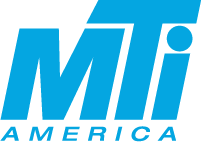The Advocacy Approach in Layman’s Terms

 By Nikki Jackson, MBA, CPCU, ARM, CDMS
By Nikki Jackson, MBA, CPCU, ARM, CDMS
The term ‘advocacy’ has been around for a while, but industry polls suggest that many professionals handling workers’ compensation claims don’t fully grasp its meaning. It’s understandable because this approach is not associated with a specific launch date, single event, or initiative. Instead, the advocacy approach is a concept that has evolved over time in our field.
Workers’ Compensation Frameworks
Every employer is unique and wants their claims handled in a certain way. When I started in claims, I managed claims for employers using the traditional workers’ compensation framework. For example, some employers took a ‘deny and litigate’ approach, emphasizing legal procedures and evidentiary requirements. Others took an adversarial approach where the process tended to be more focused on administrative procedures and jurisdictional aspects or perhaps a focus on compensation only.
Over the years, I saw a shift in how some employers view workers’ compensation. I recall working for a telecommunications company that began sending get-well cards to injured workers and who developed an in-house Claims Advocate role. Another employer implemented an advocacy approach to target their rising litigation rates. They stopped taking recorded statements, reviewed the verbiage in their initial claims packets, and distributed surveys about the interactions with the claims team.
The most memorable shift for me happened around 2017 when I worked for a client who hired us to manage their workers’ compensation, disability, and leave of absence claims/cases. At this point, I truly understood there were so many other pieces outside of the workers’ compensation claim that resulted from the claim. There were touchpoints and impacts to non-work-comp related benefits I never realized. The employer worked hard to reduce redundancies and change how employees perceived their workers’ compensation program.
Understanding the Advocacy Approach
Contrary to what you may have heard, the advocacy approach is not synonymous with ‘accept everything!’ The advocacy approach revolves around being a steadfast advocate for injured workers. Claims professionals must still perform their due diligence in determining compensability, but the way in which the injured worker is treated is different. It means we recognize injured workers who are going through something difficult, help them, and offer support along the claims journey.
The advocacy approach involves providing support, guidance, and resources to help them get the treatment and compensation they need to recover and move forward. This approach focuses on providing personalized care and attention and considers the worker’s situation and needs. By understanding the advocacy approach, injured workers and their employers can work together to ensure a smoother, more effective recovery process.
How Adjusters Can Embrace the Advocacy Approach
Here are a few tips for embracing the advocacy approach at the desk level:
Make some simple swaps to your vocabulary. Words like claimant, investigate, and denial have negative connotations. Consider simple swaps like an employee, evaluate, and not eligible.
Provide a full explanation of benefits. This can get overlooked, especially at the end of a 20–30-minute statement with the injured worker, but it’s crucial. Be sure to let the injured worker know how the process works and what to expect along the journey. You’ll also want to tell them how they can help move the process along. For example, tell them they’ll get the medical release in the initial packet and that they can fill it out, snap a photo, and send it to you.
Communicate. Communicate. Communicate. Answer your phone and respond to emails. Nothing gets an injured worker running to an attorney like an adjuster ignoring their pleas for help.
Address medical needs with urgency. Most claims professionals use an electronic mail system where paper mail, faxes, emails, etc., are uploaded to an electronic claim file, and the claims professional manages their queue. If there is a way to sort it by ‘requests for authorization’ – do it! Why? It will reduce the noise generated from not responding to it by the injured worker, the provider, the NCM, possibly the employer, etc. Likewise, continually scan your email for these types of requests.
Understand what happens outside of the workers’ compensation claim. Empower yourself with knowledge. Understand who manages disability and/or leave of absence claims for the employer. If the work comp claim is denied, is there someone you could soft-transfer the injured worker to in order to get that process started? Are there additional benefits or privileges the injured worker may lose if out on workers’ compensation (gym, daycare, airline perks, etc.)?
Speak up. If something out of your control is causing escalations on your desk, tell someone (this is usually your operations manager and/or client service manager). Here are some examples from my past:
- The lengthy initial packet had a welcome letter with outdated verbiage and adversarial tones.
- The initial statement was too lengthy and often irrelevant to the injury type.
- Injured workers and supervisors complained they provided the same information to too many people.
- A medical resource was necessary on the claim, but the injured worker didn’t want to work with a nurse.
- Despite having a bridge, the social security number of the employee never carried over causing claim delays (it could not be converted to start issuing benefits). Sidebar: this also resulted in late reporting in some states racking up some fines.
- Recommend updating the claim system technology to help your desk. In my case, it was two-way text messaging, direct deposit, average weekly wage calculations, copy and paste from electronic mail to the claim notes, and so much more.
- Recommend the employer send a get-well card or hire an employer-driven claims advocate.
- When appropriate, escalate issues with service or quality from providers/vendors.
And lastly, be empathetic and remember the injured worker has a family. Be honest with yourself about how you speak to injured workers and ensure you advocate for the injured worker like you would for a family member. For example, if they are entitled to mileage, address it at the onset of the claim.
Webinar
Join us on July 20, 2023, at 1:00 PM EST as we dive deeper into the advocacy approach in worker’s compensation. Susan Emerson with Emerson Advisory, who is the former Risk Manager for Delta Air Lines, and Melissa Mendieta, RN, CCM, with Infinity Nurse Case Management, will join us. https://ww3.workcompcentral.com/education/course/course_pk/1408










